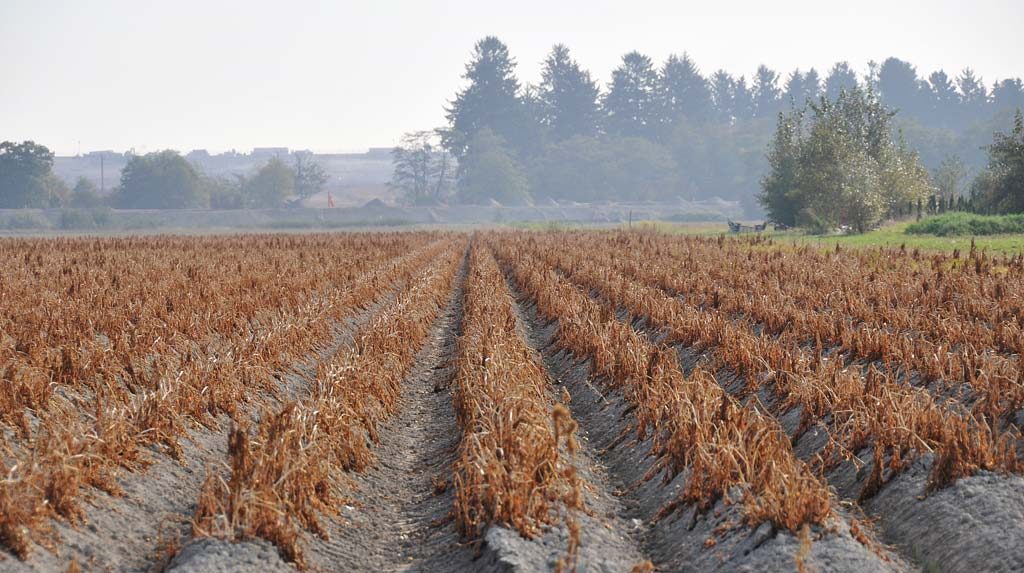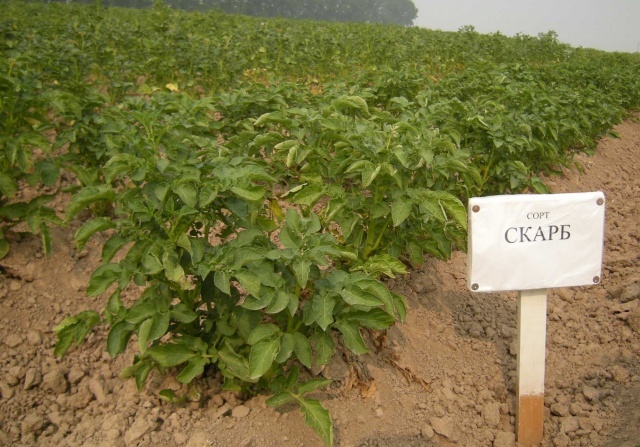Having given a large amount of energy for fruiting, the cherry needs careful care after picking berries. The plant needs to be given the opportunity not only to fully recover and prepare for wintering, but also to lay a quality foundation for shaping the future harvest of the next season.
Content:
-
How to care for cherries after fruiting
- Cleaning up after harvest
- Watering
-
When and how to fertilize a tree
- Fertilizers for feeding
- Treatment
- Pruning
- Winter preparations
- Video: cherry picking after fruit picking
- Reviews and tips from experienced gardeners
How to care for cherries after fruiting
Caring for a cherry planting after fruiting is not too complicated and tedious, it consists of the following measures:
- restoring order;
- moisturizing;
- fertilizer application;
- preventive treatment and treatment;
- trimming
- preparations for the winter.

After fruiting, cherry needs special care
Cleaning up after harvest
Work on the care of cherries begins with restoring order in the trunk circle. Weeds need to weed, collect fallen berries (remove the remaining on the tree), remove all twigs, fallen leaves, old mulch and other plant debris. All root shoots are cut out, if necessary, seedlings are selected and dug up for reproduction.
A plot of land, with an area approximately corresponding to the diameter of the crown, is dug to a depth of no more than 12–15 cm, being careful not to touch roots that are suitable close to the surface. Then they rake it open, breaking up clods of earth. The final step will be the laying of a fresh mulching layer (5-6 cm) of straw, sawdust, mowed grass, etc.
All plant residues collected under cherry bushes must be burned, as various insect pests and spores of fungal diseases can settle there.
Watering
In the second half of summer, the root system begins to develop intensively in cherries. With a lack of moisture, its growth may stop or stop completely, which will inevitably affect the future harvest. Therefore, in the absence of natural rainfall, cherry trees need to be watered at least once every 10-15 days, spending about 40-50 l of water per adult plant.
Before the arrival of steady colds (in the middle lane it is already possible in September-October), the last moisture-charging irrigation is carried out. The water consumption for a tree increases 1.5–2 times, the soil under the bushes should be soaked to a depth of at least 1.5 m. This supply of moisture will help the cherry to winter better and will immediately go into consumption in the spring when the culture is awakened after winter sleep

After harvesting, you also need to water the cherry
When and how to fertilize a tree
To restore the nutrients spent on flowering and fruiting, cherries must be fed in late August or early September. Nitrogen-containing compounds are contraindicated during this period, because this can provoke the now unnecessary growth of new shoots, which will not have time to mature properly by the winter and will still freeze.
Fertilizers for feeding
In the fall, fertilizers of the phosphorus-potassium group are used (based on 1 m2 trunk circle):
- humus or rotted garden compost (3-5 kg) and chopped wood ash (100-150 g);
- superphosphate (50–60 g) and potassium salt (20–25 g) or potassium monophosphate (45–50 g);
- any ready-made store mineral mixture marked “autumn” (the number of granules is taken in accordance with the attached instructions).
They try to combine feeding with watering. First, they dig a groove or several holes along the periphery of the crown with a depth of about 20–25 cm, pour granules into it, and then fill the holes with water. You can make dry fertilizer for digging, and then abundantly water the tree.

Fertilizers are applied around the perimeter of the crown
Treatment
Preventive treatment of cherry trees from harmful insects and diseases is mandatory autumn procedure, which is performed in late autumn, immediately after the arrival of the first autumn frosts. Plants, as well as soil in the near-stem circle, are sprayed with any of the following compounds:
- vitriol (5%);
- Bordeaux liquid (3%);
- urea (4–5%).
It is necessary to carefully examine the trunks and the main skeletal branches for the detection of cracks, oozing gum. These places need to be cleaned of sagging, washed with copper sulfate (1%) and glossed over with garden var.
If there are signs of damage by insect pests (cherry moth, lacewing larvae, hawthorn and etc.), then cherry plantings will have to be treated additionally with insecticidal preparations (Karbofos, Aktara and etc.). Fungicides (Chorus, Topaz, etc.) will help get rid of fungal pathologies (rust, hole blotch, etc.). All drugs are used strictly according to the instructions.

Preventative autumn treatments for cherries required
Pruning
About 2-3 weeks before the real frosts, when the cherry leaves in a state of winter dormancy, it is necessary to carry out sanitary pruning. The exact time depends on local climatic conditions. In the southern regions, this can be done until the end of November, in the northern regions, where winter comes much earlier, you need to catch it before the end of September (in extreme cases, before the beginning of October). The branches to be deleted are:
- patients with traces of damage by pests or diseases;
- dry, broken;
- weak and thin;
- growing inside the crown and thickening it;
- interfering, crossing and rubbing against each other;
- too long, interfering with free passage or crawling out of the allotted territory;
- pointing down.

In the fall, only sanitary pruning of cherries
Cutting tools (delimbers, pruners, saws, etc.) must be sharpened sharply, the blades must be sanitized. All places of large cuts (from 5 mm in diameter) are recommended to be carefully coated with garden varieties.
All cut branches must be burned to prevent the spread of infection and pests throughout the site.
Winter preparations
Adult cherry trees usually tolerate frosts well and do not need insulation (except for mulching). But seedlings up to 2–4 years old often freeze out in winter, so their stems are wrapped in newspapers, paper, burlap or any kind of covering breathing material. To protect the trunk from mice, it is wrapped with a thin metal or plastic mesh with a fine mesh.
To prevent damage by rodents and to protect against frost pits, trunks, as well as thick skeletal branches in the late autumn or early winter, when there will be no rain, cover with a double or triple layer of lime whitewash.

Trunks of cherry trees in the fall must be whitewashed with lime mortar
Our local Siberian mice do not like the bark of cherry trees, but they constantly encroach on apple trees. I adapted to deal with them like this: after each heavy snowfall or just about once a month (only 4-5 times per winter) I trample the snow under the plants with my feet. In a solid infusion, rodents can no longer dig holes, because apple trees and other fruit trees remain intact.
Video: cherry picking after fruit picking
Reviews and tips from experienced gardeners
On cherry - gum disease (gummosis), this is a non-infectious disease and is common in all areas of stone fruit growth. Cameo-detection usually occurs on trees affected by adverse wintering (frost cracks, sunburn) or affected fungal diseases, especially in areas with acidic and very moist soil, as well as after applying high doses of fertilizer in conditions of high humidity. This greatly weakens the trees, and sometimes leads to death. If the cracks are not deep, then they must be cleaned to a healthy tissue and glossed THIN! a layer of garden var. If the crack is deep (in the photo, it looks like this), then it cannot be covered with var, at high temperature it will flow inside and it will only get worse. I would just clear it, wash it with vitriol, and then whitewash the boles and branches.
I wouldn’t deal with pruning right now, but I would think how to prepare for winter (add potassium phosphorus and microelements) But as for the cut, I would act as with a peach (it often freezes), I wait for the leaves to bloom and flower buds to come out, on branches where the kidneys are silent I cut the cut, I cover it with glue PVA
Cherry, for prevention, in my opinion, it is best to spray with copper sulfate or Bordeaux mixture. And so that the plant does not have iron deficiency - put a tin can with rusty nails in the next to the bush and pour water from it sometimes to the roots. Yes, and after trimming, and especially sawing (This is important!) Of thick branches and trunks, saw cuts need to be processed - disinfected. I use the same drugs or gloss over with paint.
It is also necessary to liming the soil with dolomite flour. Dig up the top layer with it. After liming we harvested so that we did not know what to do.
Carrying out timely and competent post-harvest care of cherry trees, you can guaranteedly count on an abundant harvest of berries next year. The plant manages to fully restore its strength before a long winter and thoroughly prepare for the next growing season.
© 2019, homeli.ru. Copying is allowed only with a link back to the source


